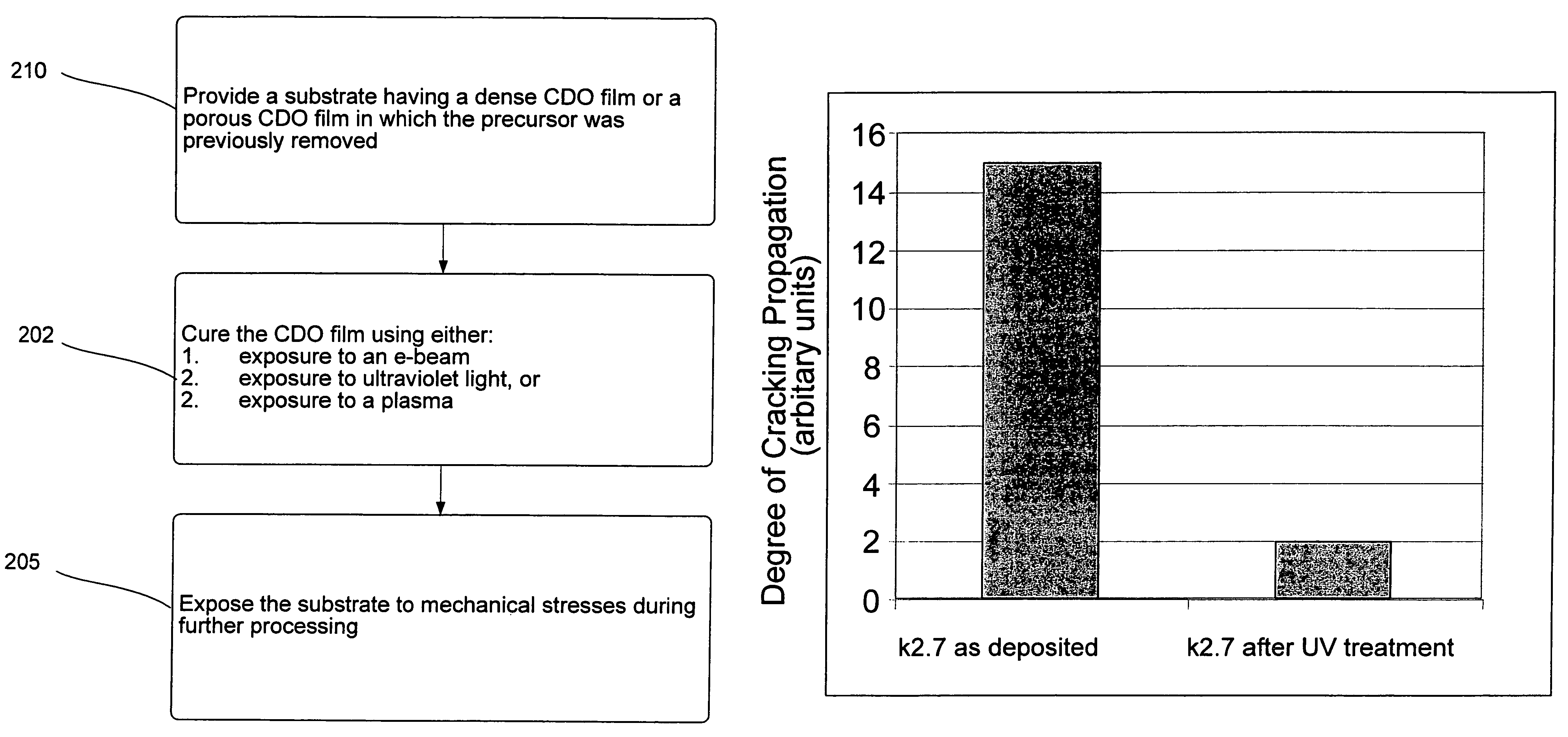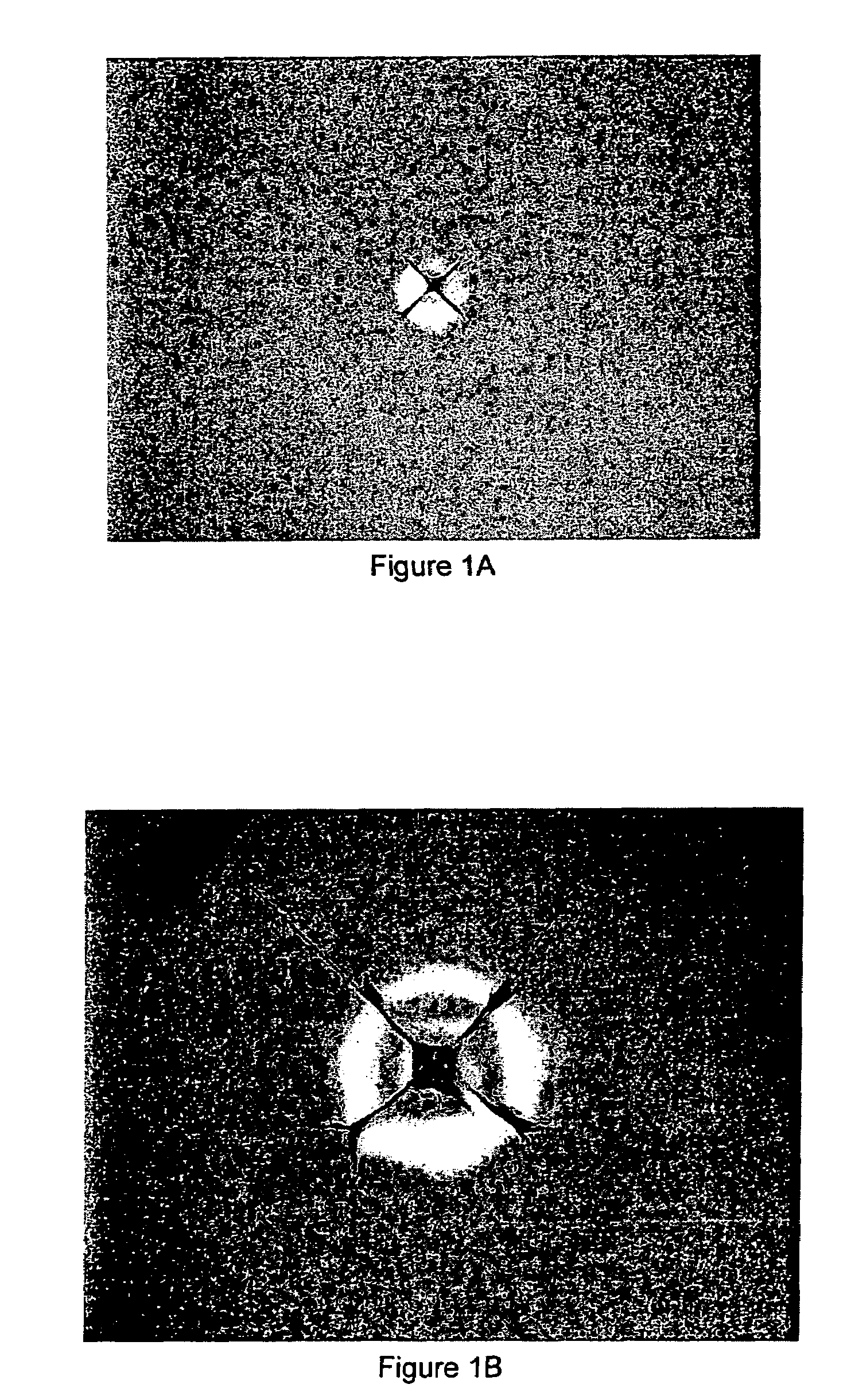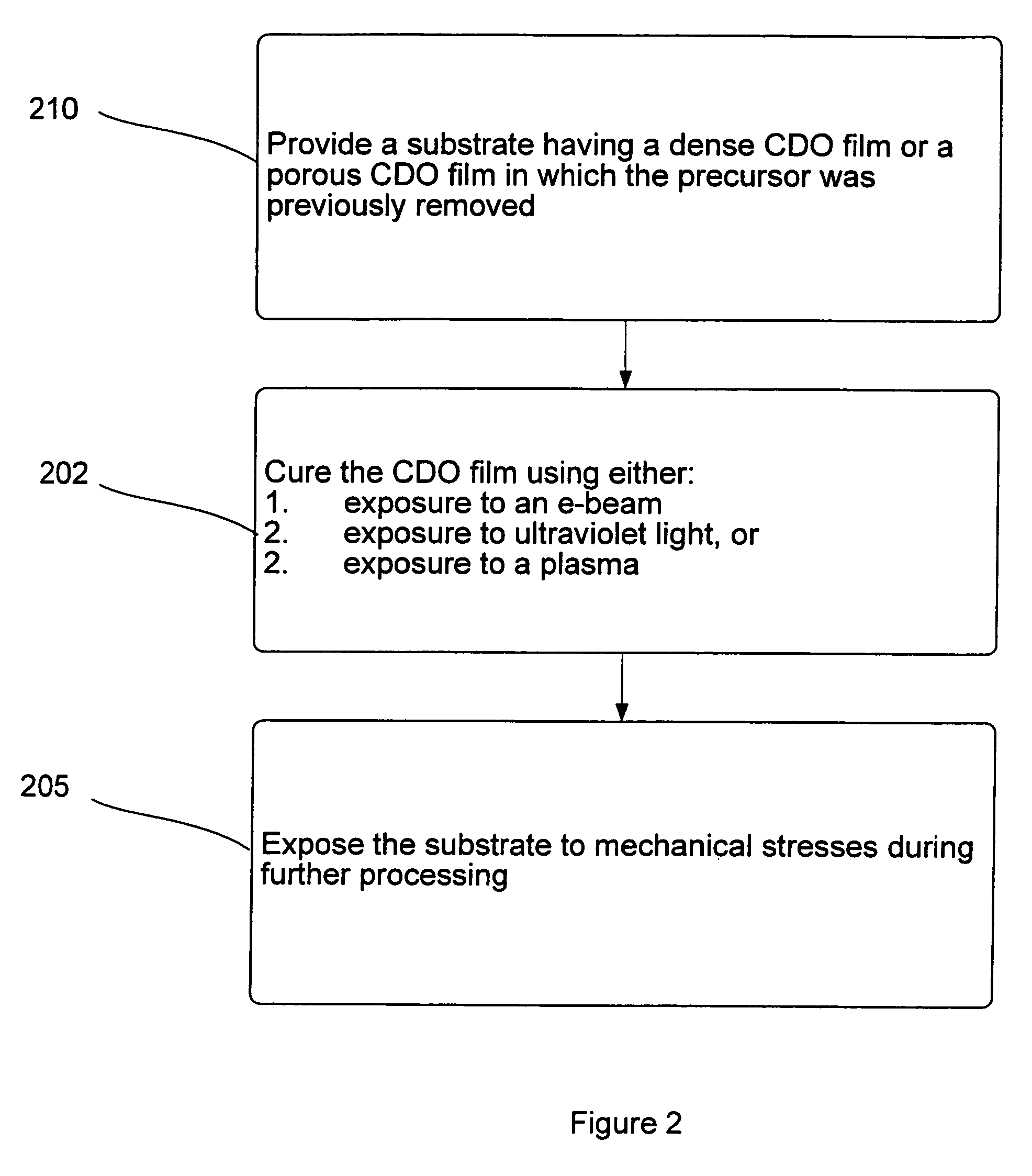Methods for improving the cracking resistance of low-k dielectric materials
- Summary
- Abstract
- Description
- Claims
- Application Information
AI Technical Summary
Benefits of technology
Problems solved by technology
Method used
Image
Examples
experimental examples
Example 1
[0056]A CDO film is prepared using a TMCTS+CO2 process. The film produced has a k value at 2.70. The film is then subjected to an UV light treatment.
[0057]FIGS. 4a and 4b show FTIR spectra of k2.7 film before and after UV treatment. FIG. 4a shows the spectra from 450 cm−1 to 4000 cm−1, detailing all the main peaks for a typical CDO film. FIG. 5b shows detailed peak variations for the Si—CH3 peak and the Si—CH2—Si peak.
[0058]After UV the treatment, the FTIR spectrum indicates a significant change in the Si—O peak at 1000 to 1150 cm−1. Also, significantly, the Si—CH3 peak has decreased and Si—CH2—Si has increased as a result of the UV treatment, which indicates that the UV treatment has induced some Si—CH3 bond dissociation and crosslinking.
[0059]The film bond structure change is also indicated by a change in refractive index (RI) at 633 nm (not shown). This is because increased crosslinking densifies the film and an increased in Si—C bond concentration increases the RI. For ...
PUM
| Property | Measurement | Unit |
|---|---|---|
| Temperature | aaaaa | aaaaa |
| Temperature | aaaaa | aaaaa |
| Length | aaaaa | aaaaa |
Abstract
Description
Claims
Application Information
 Login to View More
Login to View More - R&D
- Intellectual Property
- Life Sciences
- Materials
- Tech Scout
- Unparalleled Data Quality
- Higher Quality Content
- 60% Fewer Hallucinations
Browse by: Latest US Patents, China's latest patents, Technical Efficacy Thesaurus, Application Domain, Technology Topic, Popular Technical Reports.
© 2025 PatSnap. All rights reserved.Legal|Privacy policy|Modern Slavery Act Transparency Statement|Sitemap|About US| Contact US: help@patsnap.com



